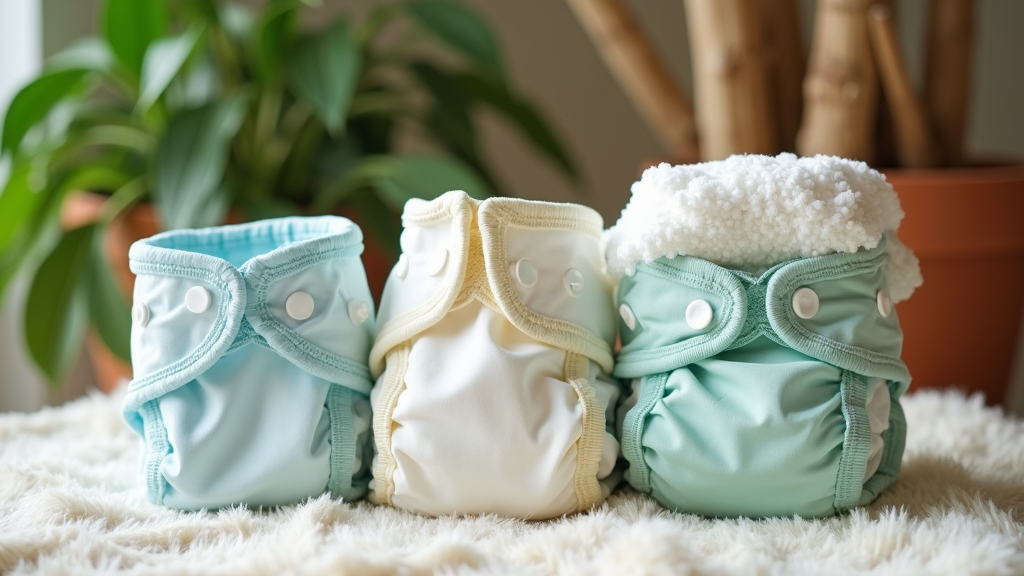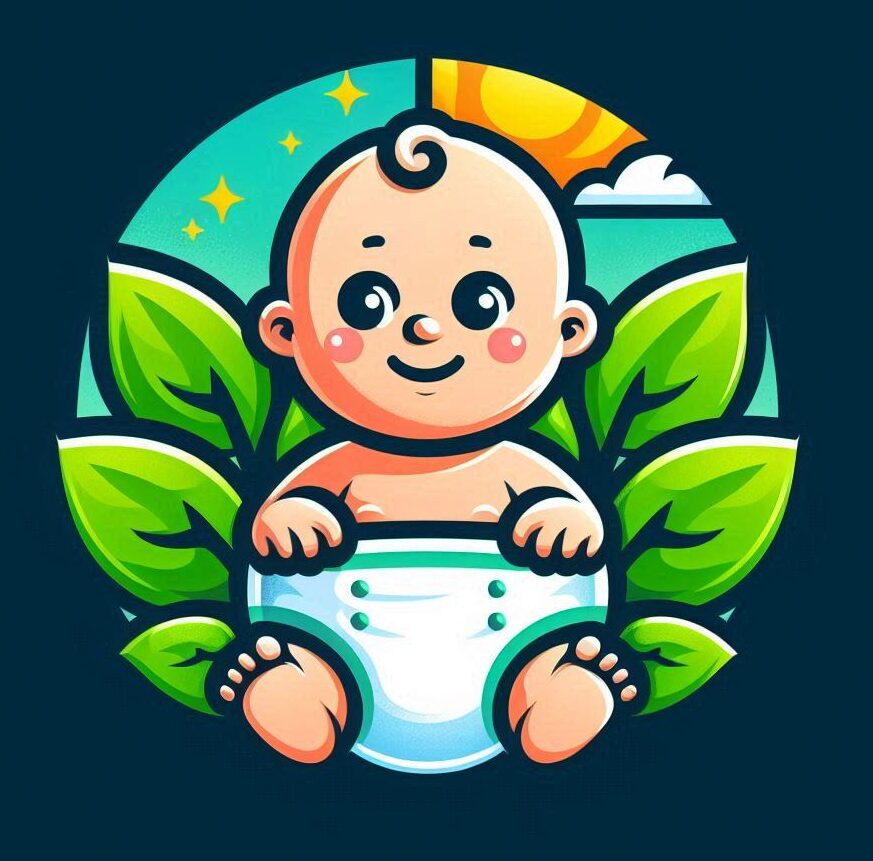Ecofriendly diapers have changed the game for parents searching for greener, safer diapering options. Whether you’re looking to cut down on landfill waste, keep harsh chemicals away from your baby, or just want something that feels better for the planet, there’s a lot to explore in this space. Picking the right type can feel confusing, so I’m going to walk you through the types, benefits, watch-outs, and some handy tips for making greener diaper choices.

What Does “Ecofriendly” Mean in Diapers?
The term “ecofriendly diaper” covers lots of different products. Some are designed to break down in the environment faster, others use safer materials, and some focus on ethical production. With traditional disposable diapers taking hundreds of years to decompose and containing plastics, parents are paying more attention to the impact their choices have on the planet.
So, when a diaper is labeled as ecofriendly, it usually means the brand has tried to reduce the environmental impact in some way—through materials, how the diaper is made, or even how it’s packaged. But not all “green” claims are equal. I’ve seen brands make big promises, but always check how much of the diaper is actually biodegradable, or what percentage of plantbased materials are used. Sometimes it’s just the packaging that’s different.
Main Types of Ecofriendly Diapers
You’ll find a few main categories of ecofriendly diapers out there, each with their own pros and quirks. Here’s a closer look:
- Biodegradable Disposable Diapers: These are designed to break down quicker than oldschool disposables. They use plantbased fibers instead of standard plastic layers and often skip some of the harsh chemicals. Popular brands I’ve come across include Andy Pandy, Dyper, and Bambo Nature. They feel and work a lot like classic disposables, which is pretty handy for busy parents.
- Cloth Diapers: Cloth diapers have been around forever, but modern versions are easier to use and way less bulky than what you might imagine. Made from cotton, bamboo, or hemp, they can be washed and reused. Cloth diapering appeals to parents who want to avoid sending diapers to the landfill altogether.
- Hybrid Diapers: This style mixes the convenience of disposables with the environmental edge of cloth. They have a reusable cover (often waterproof) and a removable insert that can be disposable or washable. You can use them in full cloth mode at home and switch to disposable inserts on the go.
How Biodegradable Diapers Work
Biodegradable diapers aim to decompose faster than traditional ones, but the process isn’t always as quick as you’d expect. Most need the right composting conditions to actually break down, which doesn’t always happen in normal landfill settings. Some cities offer commercial composting, but home composting of these diapers isn’t usually recommended, as human waste needs special handling.
Brands like Eco Pea and Naty commonly highlight how much of their product is made from renewable and compostable materials. It’s worth checking specifics—some biodegradable diapers might have 80-90% plantbased materials, while others might only reach 60%. Plastic tabs or elastic are areas where most brands still use synthetics.
A Closer Look at Cloth Diapers
Cloth diapers are washable and reusable, making them super popular for people wanting to cut waste. Here’s what to know:
- Materials: Options include organic cotton, bamboo, and hemp. The softer fabrics are gentle on baby skin. Some parents prefer bamboo or hemp because they’re extra absorbent and naturally antimicrobial.
- Styles: There are a few setups: allinones (everything stitched together), pocket diapers (where you put an absorbent insert into a “pocket”), and twopiece systems (with a waterproof cover and a separate absorbent part).
- Washing: Washing routines will take a little time to get used to. You’ll want a diapersafe detergent (fragrance free, no harsh chemicals) and an extra rinse to keep everything fresh. If you’re not up for daily laundry, a diaper service can be a lifesaver.
What Sets Hybrid Diapers Apart?
Hybrid diapers are pretty clever if you want a mix of convenience and lower waste. You get a reusable cover (which can be wiped or washed) and a choice of insert: a washable cloth insert for home, or a compostable/disposable one for travel. While still creating a little waste, it’s way less than traditional disposables; plus, you save money over time because you’re buying fewer covers.
Things to Note Before Picking Eco Diapers
Ecofriendly doesn’t always mean problem free. Here are a few points I always keep in mind when trying new types:
- Cost: Biodegradable disposables usually cost more per diaper compared to conventional ones. Cloth diapers have a higher upfront price but save money in the long run.
- Absorbency: Some eco options aren’t quite as absorbent as regular disposables, but technology is catching up. Cloth diapers might need extra inserts for overnight use.
- Fit and Comfort: Babies grow fast, and fit varies between brands. Many eco brands offer trial packs so you can try before you commit.
- Availability: Not every store carries the full lineup of sustainable brands, but subscription and bulk order options are pretty common online.
- Care Routine: Washing cloth diapers or even handling the composting for biodegradable options might take some extra time. Be prepared for a little more work up front, but it gets easier as you go.
Absorbency and Leakage
Absorbency is one of the biggest things parents hesitate about. My experience with eco disposables is that they handle daytime use well, but if you have a heavy wetter, you might want extra overnight protection or double inserts with cloth. Cloth diapers sometimes take a few washes to hit maximum absorbency. One way to boost absorbency is to use an extra bamboo insert or try a hemp blend; these natural fibers soak up more and can help prevent leaks overnight.
Cost Comparison
Traditional disposables may look cheaper by the pack, but cloth diapers or hybrids win out over time. Buying a stash of cloth diapers is an upfront investment (often $300–$700 for a full set), but after the first year, you can save hundreds compared to buying boxes of disposables every month. Biodegradable options usually cost a bit more per diaper, but families say the extra cost feels worth it for the greener benefits. Some parents also find that selling or passing along unused cloth diapers helps recoup costs later.
Disposal and Composting
For disposable eco diapers, tossing them in regular trash isn’t ideal. While some plantbased diapers do break down faster, they need special composting to reach their real eco potential. If composting isn’t available locally, ask the brand about landfill performance and any mailin composting programs. Cloth diapers skip this step completely; no trash, just laundry. If you live in a community with an industrial composting facility that accepts biodegradable diapers, you can feel confident that your used diapers are taking less of a toll on the environment.
RealWorld Scenarios: When Eco Diapers Make Sense
I’ve known parents who use cloth at home and switch to biodegradable disposables for travel or daycare. Some families do cloth fulltime, especially if they have good laundry access, while others use a hybrid mix. Hybrid systems are popular for road trips or when you want less laundry but still want to cut landfill waste.
- Travel: Biodegradable or hybrid disposables are especially handy for airports, hotels, and road trips. These options are great for when you don’t have easy laundry access or want a more convenient cleanup.
- Daycare: Some daycares are open to cloth; others prefer disposables. Hybrids work as a nice middle ground and can make transitions smoother for caregivers.
- Potty Training: Many clothtrained toddlers potty train a little earlier, thanks to feeling moisture right away (unlike superabsorbent gel cores in regular disposables). Early potty training can save you more time, money, and waste in the long run.
FAQs About Ecofriendly Diapers
Answers to some common questions I hear about greener diapering options:
Do ecofriendly diapers really break down in the landfill?
Most eco disposables decompose faster than conventional ones but need the right conditions to break down fully, which regular landfills don’t always provide.
Are eco diapers safe for sensitive skin?
Many families report less diaper rash, since eco diapers often skip perfumes, chlorine bleaching, and dyes. If your child has allergies, check for specific materials before choosing a brand. Some brands even offer unscented and latexfree versions for those with particular sensitivities.
Is switching to cloth diapers a huge hassle?
Getting started takes a little practice, but most families get the hang of it after a couple of weeks. Using a diaper sprayer and a good laundry system keeps things pretty simple. Diaper services are available in many cities to handle the washing for you, so you can focus more on your baby and less on the laundry pile.
How to Choose the Right Eco Diaper for Your Baby
Match your diaper choice with your lifestyle. If quick changes on the go and minimal laundry are your main needs, biodegradable disposables or hybrid systems are pretty handy. For parents with a good washing setup and a preference to skip disposables altogether, cloth might be a better fit. Brands offer starter packs or trial kits so you can try different types without a big commitment.
- Check for transparent ingredients; look for certifications like OEKOTEX, FSC, or TCF (totally chlorine free) for peace of mind.
- Try samples if possible. Fit can really vary from baby to baby, and comfort matters for both you and your little one.
- Balance cost, convenience, and your own routine. Sometimes a mix of options works best, especially if you want to keep backup disposables on hand.
Tips for Greener Diapering Habits
It’s not just about which diaper you pick, but also how you use them. Here are some tips from my experience that actually help make diapering friendlier for the earth:
- Use cloth wipes instead of disposable ones. They’re easy to wash with diapers and save a ton of waste over time.
- Flush solid waste from disposables or cloth before throwing them away or washing, which helps minimize landfill impact and keeps your laundry cleaner.
- Buy in bulk to cut packaging waste, and look for brands that use recyclable or compostable packaging materials.
- If using cloth, line dry when possible; this cuts down on energy use and makes diapers last longer. Sunlight also naturally bleaches stains and kills bacteria.
Exploring the world of ecofriendly diapers means looking at your baby’s needs, your daily schedule, and what works for your family. Whether you’re deep into cloth, partial to hybrids, or just grabbing better disposables, every little switch has a positive effect down the line. So go ahead and pick the option that matches your lifestyle, budget, and values—your choices today help shape what kind of world your child will grow up in.
